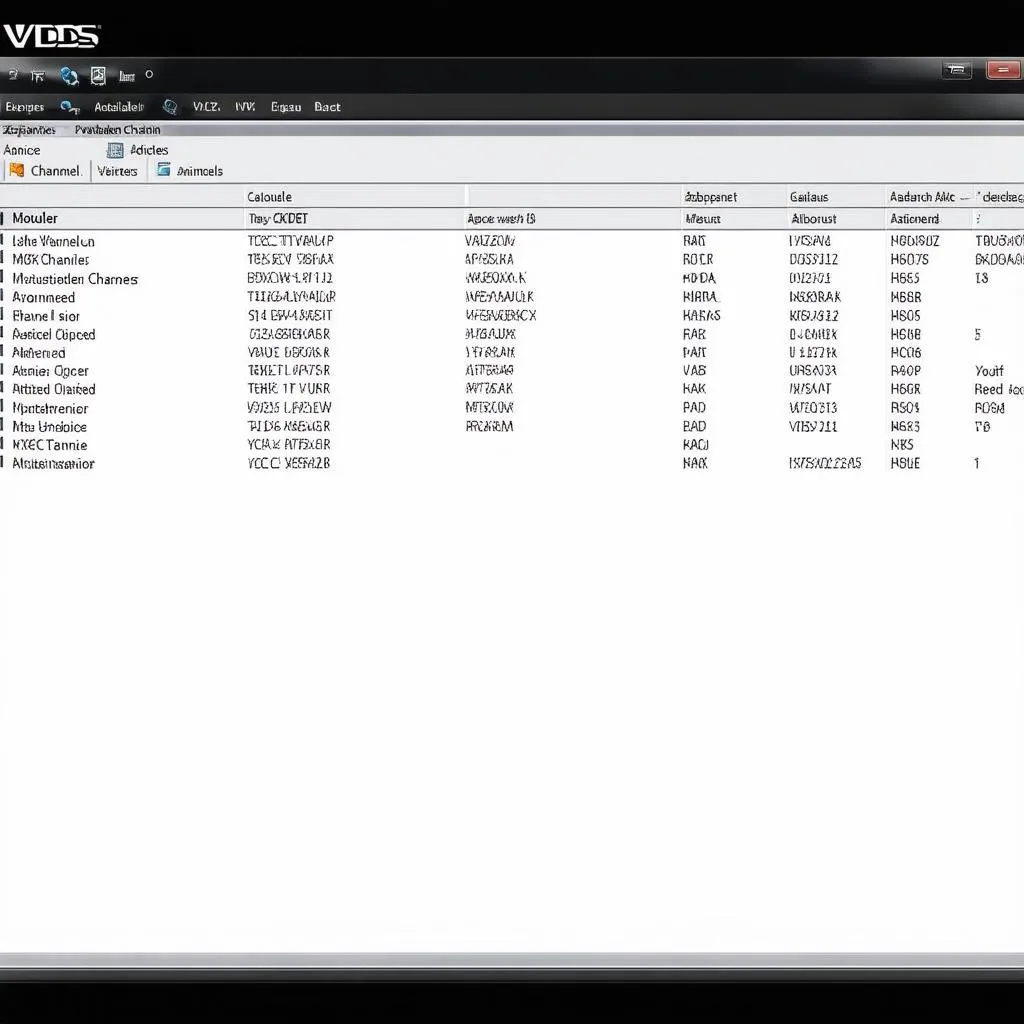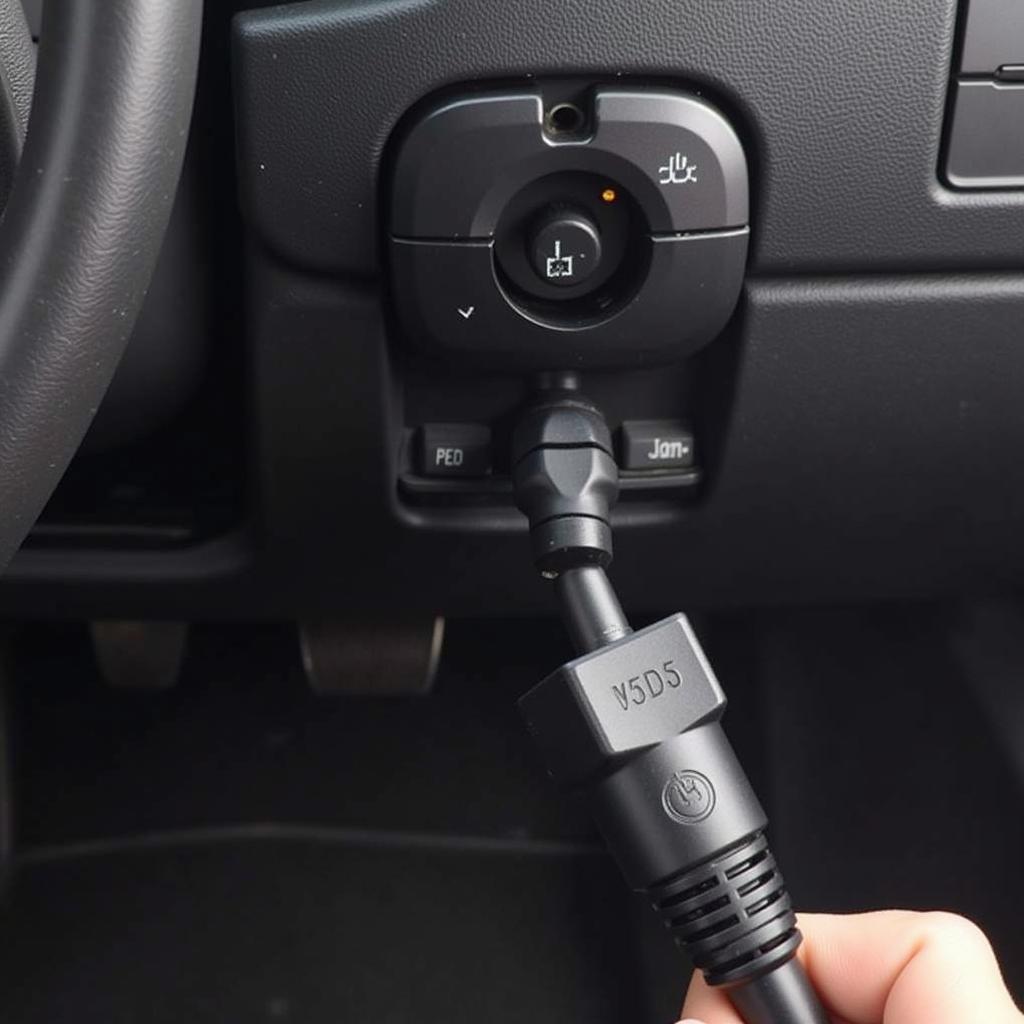The combination of atmega162 and VCDS is crucial for many automotive diagnostics and programming tasks. This article explores the functionalities, benefits, and applications of using an atmega162-based interface with VCDS software. We’ll delve into common issues, troubleshooting tips, and provide practical guidance for car owners, repair shop owners, and automotive technicians.
What is atmega162 and How Does it Work with VCDS?
Atmega162 is a versatile microcontroller often used in diagnostic interfaces for vehicles, particularly those compatible with VCDS (VAG-COM Diagnostic System) software. VCDS is a powerful diagnostic and programming tool for Volkswagen, Audi, Seat, and Skoda vehicles. The atmega162 acts as the bridge between your computer running VCDS and the vehicle’s onboard computer systems. It handles communication protocols, data transfer, and interpretation of diagnostic information. Contact Here for Free Video Tutorial.
The Benefits of Using atmega162 with VCDS
Utilizing an atmega162 based interface offers several advantages:
- Cost-effectiveness: atmega162 based interfaces are often more affordable than official diagnostic tools.
- Flexibility: These interfaces are compatible with various VCDS versions and can be used with a wide range of vehicles.
- DIY Potential: With some technical knowledge, individuals can utilize atmega162 interfaces for their diagnostic needs.
- Advanced Functionality: Access to advanced features within VCDS like module coding, adaptations, and basic settings.
Common Issues and Troubleshooting with atmega162 and VCDS
While effective, atmega162 based interfaces can encounter issues:
- Driver Problems: Incorrect or outdated drivers can prevent the interface from being recognized by the computer. Always ensure you have the latest drivers installed.
- Communication Errors: These can occur due to faulty cabling, a malfunctioning interface, or incompatibility issues. Check your connections and try a different cable if necessary.
- Software Conflicts: Other software running on your computer may interfere with VCDS and the atmega162 interface. Close any unnecessary programs before using VCDS.
- Firmware Updates: Outdated firmware on the atmega162 can cause compatibility issues. Regular firmware updates ensure optimal performance.
Optimizing Your atmega162 and VCDS Experience
To get the most out of your atmega162 interface, consider these tips:
- Invest in Quality Hardware: Opt for reputable interface manufacturers and cables to minimize potential issues.
- Stay Updated: Keep both your VCDS software and atmega162 firmware up-to-date to ensure compatibility and access to the latest features.
- Understand Your Vehicle: Familiarize yourself with your vehicle’s specific communication protocols and diagnostic procedures.
- Seek Support: Online forums and communities dedicated to VCDS and automotive diagnostics can be valuable resources for troubleshooting and advice.
How can I update the firmware on my atmega162 interface?
Firmware updates typically involve downloading the latest firmware file from the manufacturer’s website and using a dedicated flashing tool to upload it to the atmega162 chip.
What are the common communication errors I might encounter?
Common communication errors include “No Response from Controller,” “Interface Not Found,” and “K-Line Error.” These errors usually indicate a problem with the connection, cable, drivers, or the interface itself.
Advanced Applications of atmega162 and VCDS
Beyond basic diagnostics, atmega162 interfaces combined with VCDS unlock advanced functionalities:
- Coding: Modify module settings to enable or disable features, customize vehicle behavior, and adapt to aftermarket parts.
- Adaptations: Adjust specific parameters within control modules, like throttle body alignment or idle speed.
- Basic Settings: Perform guided procedures for calibrating and testing various vehicle systems.
“A reliable atmega162 interface is essential for any serious DIYer or independent repair shop working on VAG vehicles. It empowers users to perform advanced diagnostics and coding without breaking the bank,” says John Miller, Senior Automotive Diagnostic Technician at AutoTech Solutions.
Can I use an atmega162 interface to code new features in my car?
Yes, you can use an atmega162 interface with VCDS to code various features in VAG vehicles, depending on the specific module and vehicle model.
Conclusion
The combination of atmega162 and VCDS offers a powerful and cost-effective solution for automotive diagnostics and programming. Understanding the functionalities and potential issues will enable you to effectively utilize these tools for your automotive needs. By staying updated and utilizing available resources, you can maximize the potential of atmega162 and VCDS for maintaining and modifying your vehicles.
FAQ
- Is atmega162 compatible with all VCDS versions? Generally, yes, but it’s best to check the manufacturer’s specifications.
- Where can I find atmega162 based interfaces? Reputable online retailers and automotive parts suppliers.
- Do I need any special skills to use an atmega162 interface? Basic computer skills and some automotive knowledge are helpful.
- Can I damage my car using an atmega162 and VCDS? Improper use can potentially cause issues, so always proceed with caution and follow instructions.
- What are some common coding applications? Enabling/disabling convenience features, adapting to aftermarket parts.
- What are the system requirements for running VCDS with an atmega162 interface? A Windows-based PC and a compatible USB port.
- What should I do if my interface is not recognized? Check drivers, cable connections, and try different USB ports.
“Using an atmega162 interface with VCDS allows you to delve deep into your car’s systems and perform tasks previously only accessible to dealerships. It’s a game-changer for both enthusiasts and professionals,” adds Maria Rodriguez, Lead Automotive Engineer at CarDiagTech.
For further assistance, please contact us via Whatsapp: +1 (641) 206-8880, Email: [email protected] or visit our workshop at 276 Reock St, City of Orange, NJ 07050, United States. We offer 24/7 customer support.



